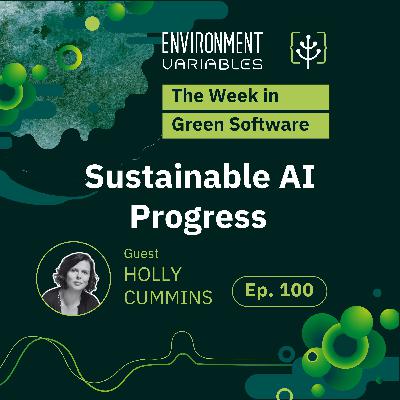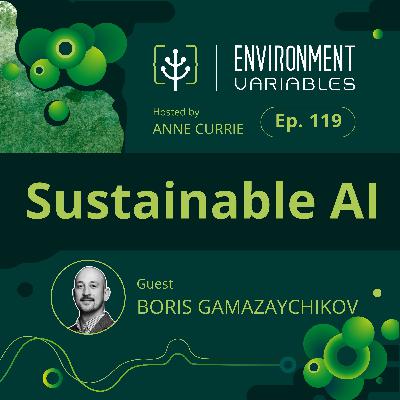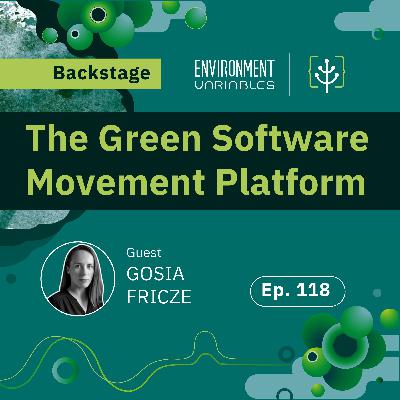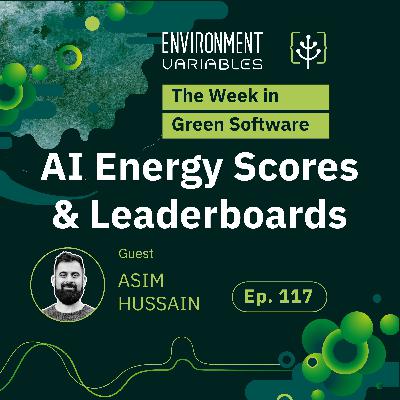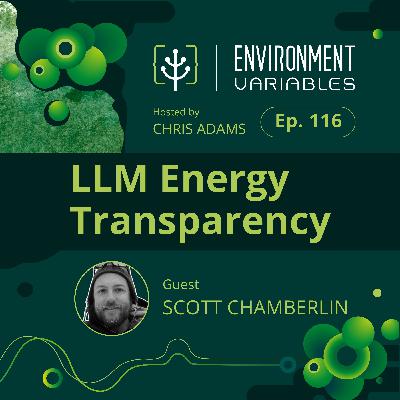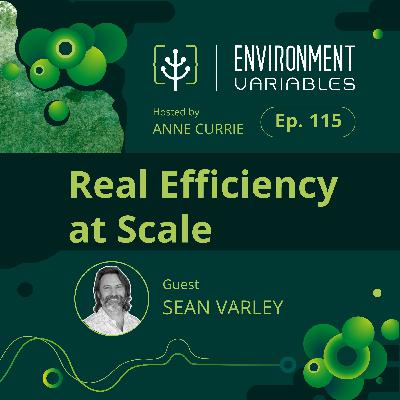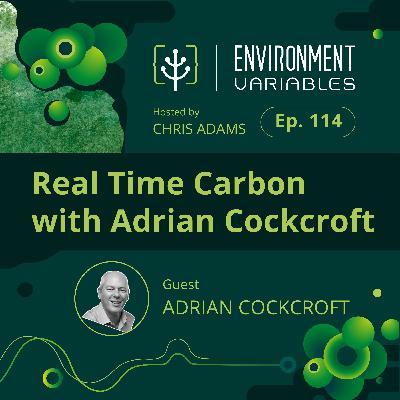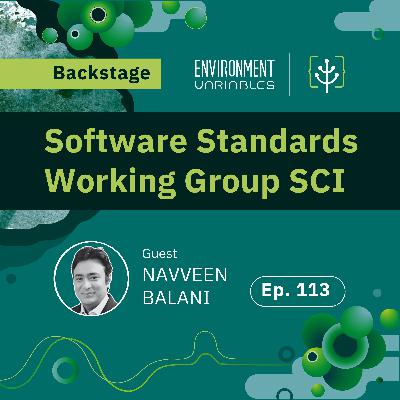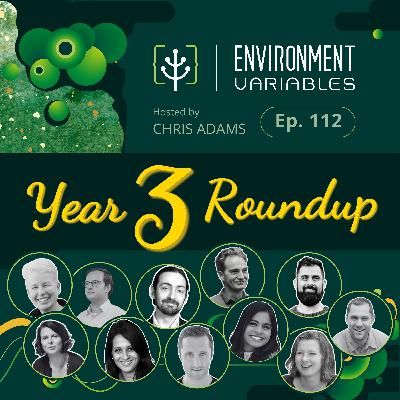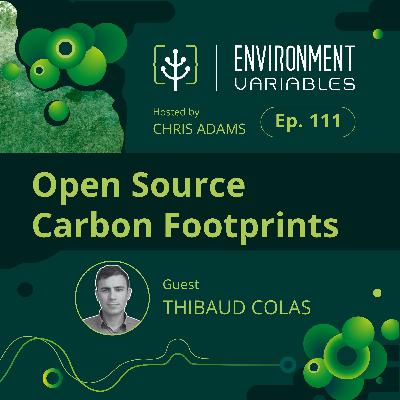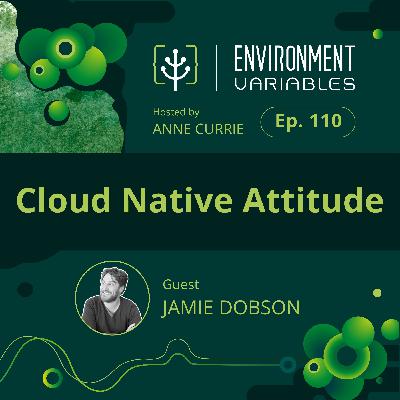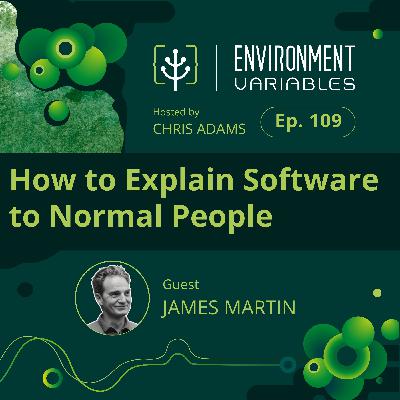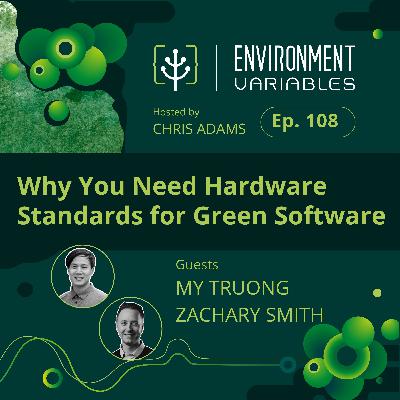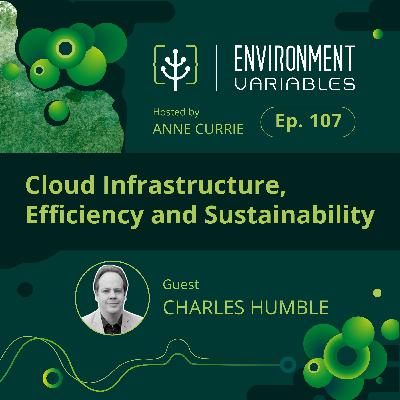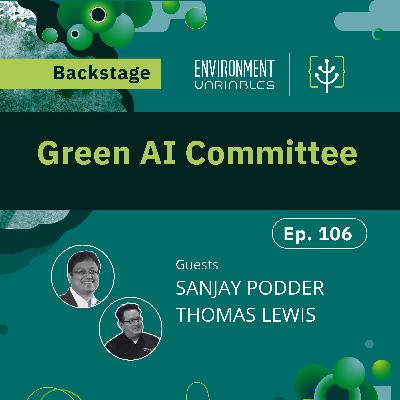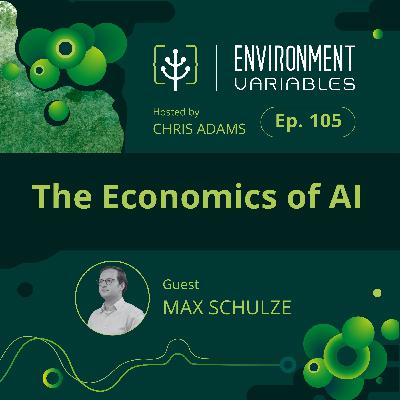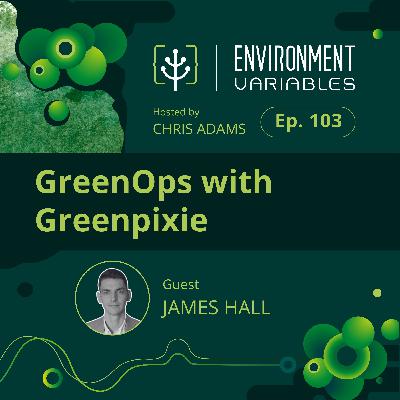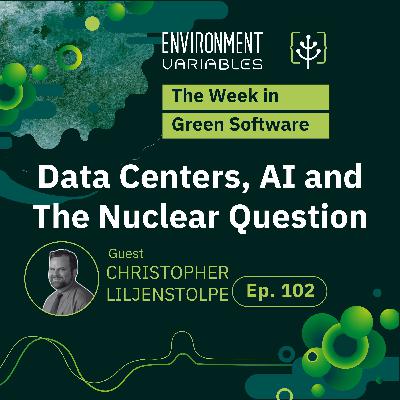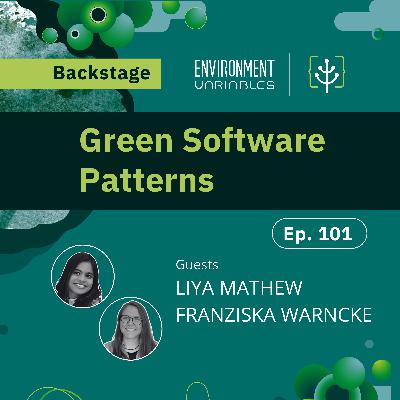The Week in Green Software: Sustainable AI Progress
Update: 2025-03-20
Description
For this 100th episode of Environment Variables, guest host Anne Currie is joined by Holly Cummins, senior principal engineer at Red Hat, to discuss the intersection of AI, efficiency, and sustainable software practices. They explore the concept of "Lightswitch Ops"—designing systems that can easily be turned off and on to reduce waste—and the importance of eliminating zombie servers. They cover AI’s growing energy demands, the role of optimization in software sustainability, and Microsoft's new shift in cloud investments. They also touch on AI regulation and the evolving strategies for balancing performance, cost, and environmental impact in tech.
Learn more about our people:
Find out more about the GSF:
News:
- AI Action Summit: Two major AI initiatives launched | Computer Weekly [40:20 ]
- Microsoft reportedly cancels US data center leases amid oversupply concerns [44:31 ]
Events:
- Data-driven grid decarbonization - Webinar | March 19, 2025
- The First Eco-Label for Sustainable Software - Frankfurt am Main | March 27, 2025
Resources:
- LightSwitchOps
- Why Cloud Zombies Are Destroying the Planet and How You Can Stop Them | Holly Cummins
- Simon Willison’s Weblog [32:56 ]
- The Goal
If you enjoyed this episode then please either:
- Follow, rate, and review on Apple Podcasts
- Follow and rate on Spotify
- Watch our videos on The Green Software Foundation YouTube Channel!
TRANSCRIPT BELOW:
Holly Cummins: Demand for AI is growing, demand for AI will grow indefinitely. But of course, that's not sustainable. Again, you know, it's not sustainable in terms of financially and so at some point there will be that correction.
Chris Adams: Hello, and welcome to Environment Variables, brought to you by the Green Software Foundation. In each episode, we discuss the latest news and events surrounding green software. On our show, you can expect candid conversations with top experts in their field who have a passion for how to reduce the greenhouse gas emissions of software.
I'm your host, Chris Adams.
Anne Currie: So hello and welcome to Environment Variables, where we bring you the latest news and updates from the world of sustainable software. Now, today you're not hearing the dulcet tones of your usual host, Chris Adams. I am a guest host on this, a common guest, a frequent guest host, Anne Currie. And my guest today is somebody I've known for quite a few years and I'm really looking forward to chatting to, Holly.
So do you want to introduce yourself, Holly?
Holly Cummins: So I'm Holly Cummins. I work for Red Hat. My day job is that, I'm a senior principal engineer and I'm helping to develop Quarkus, which is Java middleware. And I'm looking at the ecosystem of Quarkus, which sounds really sustainability oriented, but actually the day job aspect is I'm more looking at
the contributors and, you know, the extensions and that kind of thing. But one of the other things that I do end up looking a lot at is the ecosystem aspect of Quarkus in terms of sustainability. Because Quarkus is a extremely efficient Java runtime. And so when I joined the team, one of the things we asked well, one of the things I asked was, can we, know this is really efficient. Does that translate into an environmental, you know, benefit? Is it actually benefiting the ecosystem? You know, can we quantify it? And so we did that work and we were able to sort of validate our intuition that it did have a much lower carbon footprint, which was nice.
But some things of what we did actually surprised us as well, which was also good because it's always good to be challenged in your assumptions. And so now part of what I'm doing as well is sort of broadening that focus from, instead of measuring what we've done in the past, thinking about, well, what does a sustainable middleware architecture look like?
What kind of things do we need to be providing?
Anne Currie: Thank you very much indeed. That's a really good overview of what I really primarily want to be talking about today. We will be talking about a couple of articles as usual on AI, but really I want to be focused on what you're doing in your day job because I think it's really interesting and incredibly relevant.
So, as I said, my name is Anne Currie. I am the CEO of a learning and development company called Strategically Green. We do workshops and training around building green software and changing your systems to align with renewables. But I'm also one of the authors of O'Reilly's new book, Building Green Software, and Holly was probably the most, the biggest single reviewer/contributor to that book, and it was in her best interest to do so because, we make, I make tons and tons of reference to a concept that you came up with.
I'm very interested in the backstory to this concept, but perhaps you can tell me a little bit more about it because it is, this is something I've not said to you before, but it is, this comes up in review feedback, for me, for the book, more than any other concept in the book. Lightswitch Ops. People saying, "Oh, we've put in, we've started to do Lightswitch Ops."
If anybody says "I've started to do" anything, it's always Lightswitch Ops. So tell us, what is Lightswitch Ops?
Holly Cummins: So Lightswitch Ops, it's really, it's about architecting your systems so that they can tolerate being turned off and on, which sounds, you know, it sounds sort of obvious, but historically that's not how our systems have worked. And so the first step is architect your system so that they can tolerate being turned off and on.
And then the next part is once you have that, actually turn them off and on. And, it sort of, it came about because I'm working on product development now, and I started my career as a performance engineer, but in between those two, I was a client facing consultant, which was incredibly interesting.
And it was, I mean, there was, so many things that were interesting, but one of the things that I sort of kept seeing was, you know, you sort of work with clients and some of them you're like, "Oh wow, you're, you know, you're really at the top of your game" and some you think, "why are you doing this way when this is clearly, you know, counterproductive" or that kind of thing.
And one of the things that I was really shocked by was how much waste there was just everywhere. And I would see things like organizations where they would be running a batch job and the batch job would only run at the weekends, but the systems that supported it would be up 24/7. Or sometimes we see the opposite as well, where it's a test system for manual testing and people are only in the office, you know, nine to five only in one geo and the systems are up 24 hours.
And the reason for this, again, it's sort of, you know, comes back to that initial thing, it's partly that we just don't think about it and, you know, that we're all a little bit lazy, but it's also that many of us have had quite negative experiences of if you turn your computer off, it will never be the same when it comes back up.
I mean, I still have this with my laptop, actually, you know, I'm really reluctant to turn it off. But now we have, with laptops, we do have the model where you can close the
Comments
In Channel

